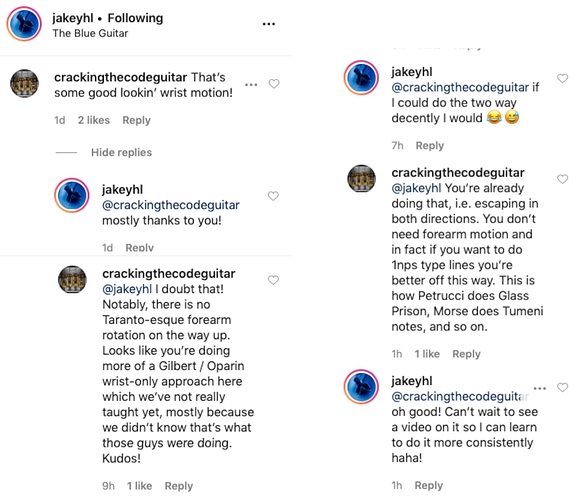I’ve noticed with increasing frequency that the mere utterance of the phrase “two way pickslanting” provokes the term’s creator to feel compelled to apologize for having introduced it to the world. Come on man, it’s not like you invented Keurig cups or something equally ecologically destructive. Years of thought, practice, experiment, and analysis have gone into the pickslanting concepts - why would you need to apologize for them?
While I understand some of the justification for distancing the CtC vocabulary from an earlier methodology, I question the need to discredit so much of the foundational material. 3 Major seminars are dedicated almost exclusively to pick slanting mechanics: 2 on Downward Pickslanting and 1 on Two-Way Pickslanting. There’s a recurring theme in many posts about a need to go back and “fix” a lot of the earlier pickslanting material. Let’s not ‘George Lucas’ this bit and destroy the original work with revisionism.
Han shot first.
It seems to me that the whole debate around pickslanting terminology (DWPS/UWPS/2WPS) vs pick escape terminology (USX/DSX/DBX) boils down to how we conceptualize pick interaction with the string (or the “plane of the strings”). The pickslanting terms model the way the pick attacks the string, while the escape terms model the way the pick leaves the string.
Personally, I find it much more intuitive to focus on the Attack. That’s the thing that initiates both physical movement and string vibration. Modeling a picking system on the Escape seems backwards - we focus on how the action ends, not how it starts. I recognize that the escape is highly relevant to picking mechanics generally, especially around string changes - but this is already a core part of pickslanting concepts without needing to reframe them.
Rotation and “Double Escape” movements seem like the catalyst for this shift toward the “escape” focus. These mechanics are the most common scenario where the Attack and the Escape are not in linear opposition. For example, in linear pickslanting mechanics we can assume that a DWPS has an USX, while an UWPS has a DSX. Pick rotation creates a scenario where DWPS can be DSX (to prepare for an upstroke string change) and vice versa. Double Escape (DBX) - where every stroke is curved pick rotation - is the main thing that deviates from pickslanting, because it’s not based on an linear attack/escape trajectory.
All of this seemed pretty clear to me from the Anti-gravity seminar and the 2WPS Primer, so I’m confused on what exactly would need to be “fixed”?
I hope this doesn’t come across as being resistant to evolving ideas as new observations support them. I appreciate the scientific methods used on CtC to get deeper in playing mechanics. The whole thing reminds me of this classic:



